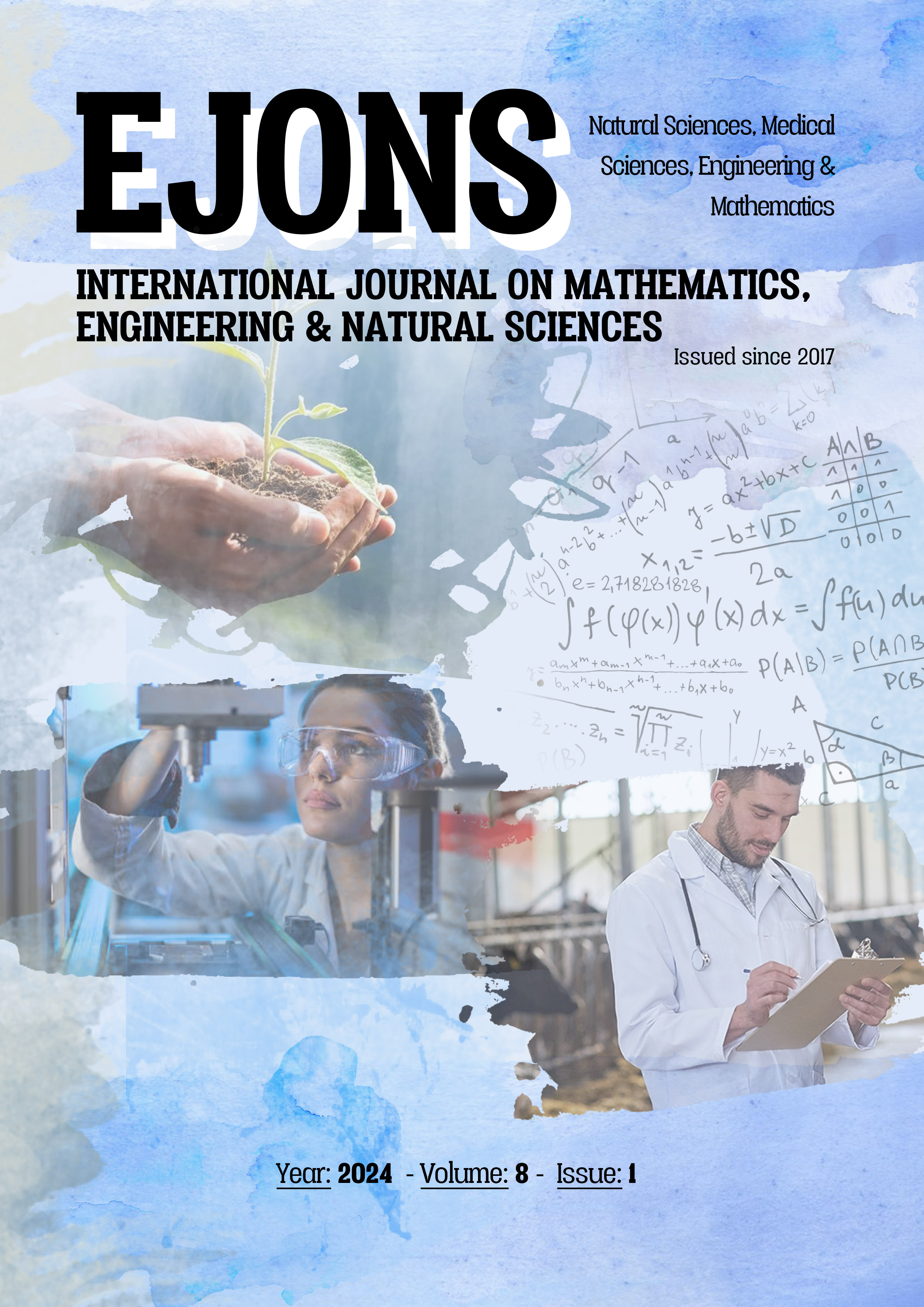TThe Effect of Barnyard Manure and Tea Compost Applications on Hemp Yield Parameters
DOI:
https://doi.org/10.5281/zenodo.10814400Keywords:
Hemp, Natural fiber, Abiotic stress, Recycling, Naturel wasteAbstract
Cannabis (Cannabis sativa L.) is an annual plant originating from Central Asia, which has been cultivated in different climatic conditions for many years and used for fiber, seed and medical purposes. Organic wastes such as barnyard manure and tea compost are used in agriculture to improve soil and increase productivity, agricultural sustainability and reduce environmental pollution. In this study, the yield and quality values of hemp plants were examined by applying different ratios of barnyard manure, tea compost, tea compost-barn manure and soil alone to hemp plants before planting. Barn manure and tea compost used in the experiment were calculated and applied as % based on soil weight. In each application (barnyard manure, tea compost and tea compost + barnyard manure), growing media were obtained by using different ratios of 1%, 2%, 3% and 4%. The project was carried out in the greenhouse conditions of Yozgat Bozok University Research and Application Area. The experiment was established in 2022 according to the Coincidence Plots Experimental Design with 4 replications. In the project, Finola hemp variety obtained from Hemp Research Institute was used as material. According to the results obtained in the study; average values of plant height were 79.25-225.25 cm, average values of technical stem length were 34.00-114.75 cm, average values of stem diameter were 1.05-5.53 mm, average values of fiber yield were 47.63-294.88 kg/da, average values of seed yield were 62.44-248.31 kg/da, average values of biological yield were 875.00-4500.75 kg/da, and oil content values varied between 26.02-30.26%. In the study, barnyard manure applications provided the highest yield, while the lowest yield was observed only in tea compost applications. As a result, barnyard manure gave the most effective result in terms of hemp yield.
References
Aksoy, D., Aytaç, S. (2021). Samsun ekolojik koşullarında Narlısaray populasyonu ile yabancı orijinli kenevir çeşitlerinin verim ve bazı kalite özelliklerinin araştırılması (, Ondokuz Mayıs Üniversitesi, Lisansüstü Eğitim Enstitüsü, Yüksek Lisans Tezi).
Aydoğan, M., Terzi, Y. E., Gizlenci, Ş., Mustafa, A. C. A. R., Alpay, E. S. E. N., & Meral, H. (2020). Türkiye’de kenevir yetiştiriciliğinin ekonomik olarak yapılabilirliği: Samsun ili Vezirköprü ilçesi örneği. Anadolu Tarım Bilimleri Dergisi, 35(1), 35-50.
Gurel, Akdemir H, Emiroglu SH, Kadoglu H, land, HB (2000) Turkey fiber crops, Cotton farming, overview, and other fiber crops Technology. Turkey Agricultural Engineering V. Technical Congress, 17-21 January, Ankara, 525- 566.
Gizlenci Ş, Acar M, Yiğen Ç, Aytaç S, (2019) Hemp Agriculture, Ministry of Agriculture and Forestry, General Directorate of Agricultural Research and Policies, Black Sea Agricultural Research Institute Directorate, Samsun, 2019
Koçer, T., 2022. Tokat - kazova şartlarında bazı kenevir (Cannabis sativa l.) çeşit ve populasyonlarının bitkisel ve verim özelliklerinin belirlenmesi, Tokat Gaziosmanpaşa Üniversitesi, Ziraat Fakültesi, Yüksek lisans Tezi.
Mirze, O., 2023. Kenevir ( Cannabis sativa L.) yetiştiriciliğinde su tutucu polimer uygulamalarının verim ve kalite özellikleri üzerine etkisi Yozgat Bozok Üniversitesi / Lisansüstü Eğitim Enstitüsü / Tarla Bitkileri Ana Bilim Dalı, Yüksek Lisans Tezi.
Özük, A.R. 2023. Yozgat şartlarında farklı azot dozlarının bazı kenevir genotiplerinin (Cannabis sativa var. sativa) verim ve kalite özelliklerine etkileri, Yozgat Bozok Üniversitesi / Lisansüstü Eğitim Enstitüsü / Tarla Bitkileri Ana Bilim Dalı, Yüksek Lisans Tezi.
Şakar, H., 2022. Tokat Kazova şartlarında ikinci ürün kenevir (Cannabis sativa L.) yetiştiriciliğinde farklı ekim sıklıklarının verim ve kalite özelliklerine etkisi, Tokat Gaziosmanpaşa Üniversitesi, Ziraat Fakültesi, Yüksek lisans Tezi.
Schultes, R.E., A. Hofmann, A., 1980. The Botany and Chemistry of Hallucinogens, Charles C. Thomas, Springfield, Illinois, p. 21.
Small, E., & Marcus, D. (2002). Hemp: A new crop with new uses for North America. Trends in new crops and new uses, 24(5), 284-326.
Yazici L., Yılmaz G., Yıldırım C., Koçer T., ve Uskutoğlu T.,(2023). Avrupa tescilli bazı kenevir (Cannabis sativa L.) çeşitlerinin Verim Kriterleri Yönünden Performansı. Journal of Applied Sciences Uygulamalı Bilimler Dergisi. MAS Japs 8(1): 7–15, 2023. DOI: http://dx.doi.org/10.5281/zenodo.7603456.
Yazici L., (2022). Optimizing plant density for fiber and seed production in industrial hemp (Cannabis sativa L.), Journal of King Saud University – Science 35 (2023) 102419.
Yazici L., Yılmaz G., Koçer T. and Şakar H., (2020). Investigation of some Yield Characteristics of Hemp (Cannabis sativa L.) in Tokat Ecology. J. Int. Environmental Application & Science, Vol. 15(2): 104-108.
Yazici L., ve Yılmaz G. ,2021. Endüstrı̇yel Kenevı̇r ve Geleceğı̇.12. Uluslararası Bilimsel Araştırmalar Kongresi(Online),Kongre Bildiri Tam Metin Kitabı,362-369.
Yılmaz G., ve Yazici L., 2022. Dünya’da Yükselen Değer; Endüstriyel Kenevir (Cannabis sativa L.). Bozok Tarım ve Doğa Bilimleri Dergisi, Cilt: 1, Sayı:1, Syf; 54-61.
Downloads
Published
How to Cite
Issue
Section
License
Copyright (c) 2024 EJONS INTERNATIONAL JOURNAL

This work is licensed under a Creative Commons Attribution-NonCommercial 4.0 International License.


